The Geometric Future Eskimo Junior 36 AIO Cooler Review: Subdued Minimalism
by E. Fylladitakis on February 8, 2024 8:00 AM EST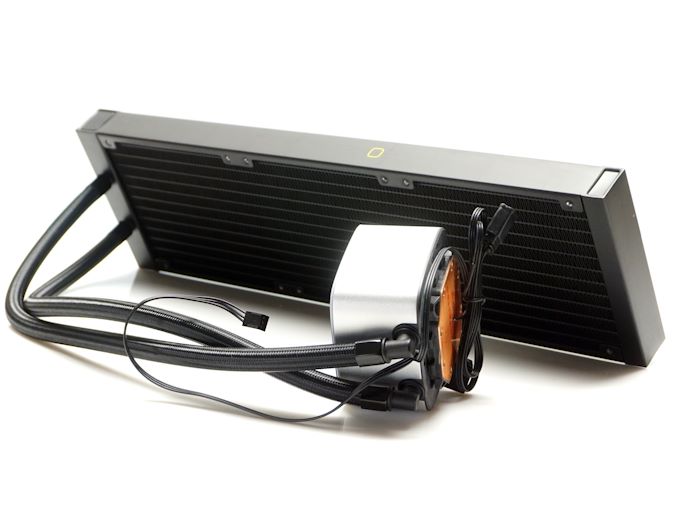
Today we're looking at a all-in-one closed loop cooler from a face that's new to AnandTech: Geometric Future. Founded in 2020, Geometric Future is a PC components manufacturer with a goal of setting themselves apart in the crowded PC marketplace by redefining modern aesthetics. Their approach to design emphasizes the application of geometric elements and minimalist philosophy, as reflected in their slogan, "Simplify". They regard themselves as a potential future backbone in China's design industry, starting with a small step in the IT sector.
For such a new company, Geometric Future has already made significant strides in the realm of PC power and cooling products. One of their most notable products – and what we're reviewing today – is the Eskimo Junior 36, an all-in-one CPU liquid cooler available in 240mm and 360mm sizes. This cooler is designed with a minimalist aesthetic in mind, featuring a simplistic CPU block and equipped with high-performance Squama 2503 fans. Geometric Future pitches the Eskimo Junior 36 as being engineered to provide an optimal balance of cooling efficiency and aesthetics, making it able to achieve excellent cooling capabilities while maintaining low noise levels.
But marketing claims aside, we shall see where it stands in today’s highly competitive market in this review.
| Geometric Future Eskimo Junior 36 360mm AIO CPU Cooler Specifications | |||
| Type | All-in-One Liquid Cooler | ||
| Dimensions | 397 x 120 x 52 mm (radiator with fan) 78 x 78 mm (main block) 55 x 55 mm (coldplate) |
||
| Fans | 3 x 120 mm Squama 2503B FDB Fans 2000 RPM (max) |
||
| RGB | Yes (ARGB) | ||
| Supported Sockets | Intel: LGA1700 / LGA1200 / LGA115x / LGA2066 / LGA 2011 AMD: AM5 / AM4 / TR4 |
||
| Warranty | 5 Years | ||
| Price | $120 | ||
Packaging & Bundle
The company ships the Eskimo Junior 36 in a long and large cardboard box that hints at the dimensions of the cooler. A detailed render of the cooler itself decorates the front side of the yellow/white box, with nothing but the compatibility badges suggesting that the cooler features RGB lighting. Inside the box, the cooler is securely placed within custom-designed cardboard inserts, ensuring its protection during transit.
Geometric Future supplies only the essential parts required to use the cooler right out of the box, with no extra items or accessories supplied. The notable part here is that they provide mounting hardware for practically all currently available consumer CPU sockets, including TR4 for Threadripper 5000 processors.
The Geometric Future Eskimo Junior 36 AIO Liquid Cooler
At first glance, the Geometric Future Eskimo Junior 36 cooler familiarly aligns with the standard design of most 360 mm AIO coolers in the market. This cooler adheres to the typical AIO configuration, featuring a single radiator, two hoses, and a combined block that integrates a copper CPU contact plate with a compact liquid pump. Geometric Future employs black sleeved low-permeation rubber tubing, with an eye towards enhancing both flexibility and aesthetic quality. This design choice underscores Geometric Future's commitment to blending functional cooling solutions with a sleek and more sophisticated appearance.
The substantial radiator of the Geometric Future Eskimo Junior 36 cooler, measuring 397 mm in length, necessitates a case that can house three 120 mm fans in sequence, along with adequate room for the radiator's extra dimensions. This radiator, with a thickness of 27 mm, requires a total clearance of 55 mm when paired with fans to ensure correct installation in a system. Design-wise, it adheres to the prevalent dual pass cross-flow configuration, characterized by small fins soldered onto thin, oblong tubes. A distinctive feature of this cooler is the company logo, subtly etched across the sides of the radiator, but is nearly invisible and most likely only the yellow “O” will be visible inside a PC case.
The main block of the Geometric Future Eskimo Junior 36 AIO cooler is designed with a minimalist approach. It is a very smooth and clean solid block of metal with a high-gloss plastic top cover. 90° fittings accommodate both hoses on its side and two cables exit from the same area, one 4-pin power cable and one for the RGB lighting that can be attached either to the included controller or any other compatible RGB controller. The focus of the design appears to be on achieving a balance between functionality and a clean, understated appearance, in line with Geometric Future's overall design ethos.
At the bottom of the main block assembly, we can see an octagonal contact plate that is attached to the plastic base cover with eight screws. Its surface is not polished down to a mirror finish but is adequately smooth and flat. The contact plate is 55×55 mm, significantly smaller than the overall 78×78 mm size of the entire block but adequate for currently available CPU dies, with the exception of the Threadripper processors that need a contact surface that is at least 70 mm long. Despite that, the Eskimo Junior 36 will still work on a Threadripper processor, just not optimally.
The three 120 mm fans supplied with the Eskimo Junior 36 probably are the highlight of the entire kit. The power and RGB cables of the fans are short, featuring both a male and a female connector. This allows multiple fans to be connected in parallel to each other (daisy-chain) and only one extension wire can be used to connect all three fans to the power and to the RGB controller. They feature a fluid bearing engine and have a maximum speed of 2000 RPM. The highlight of these fans is their scale-like “Squama” rubber surface that allegedly improves performance and reduces aerodynamic noise levels. The company’s performance specifications for the fans appear a little overconfident, especially the extremely low dB(A) rating, which would suggest that the pump is actually louder than the fan(s) and, as we will also see in the following pages, that is most definitely not the case. These fans also feature RGB lighting, even though their all-black design conceals it even from trained PC builder eyes.
The RGB lighting of the Geometric Future Eskimo Junior 36 cooler is designed with subtlety in mind. It features a ring of RGB lighting around the top edge of the main block and on the fan frames. This design choice enhances the cooler's visual appeal without being overly conspicuous or detracting from its minimalist aesthetic. The RGB lighting on the Eskimo Junior 36 is a fine example of Geometric Future's commitment to combining functional performance with clean, sophisticated design elements.



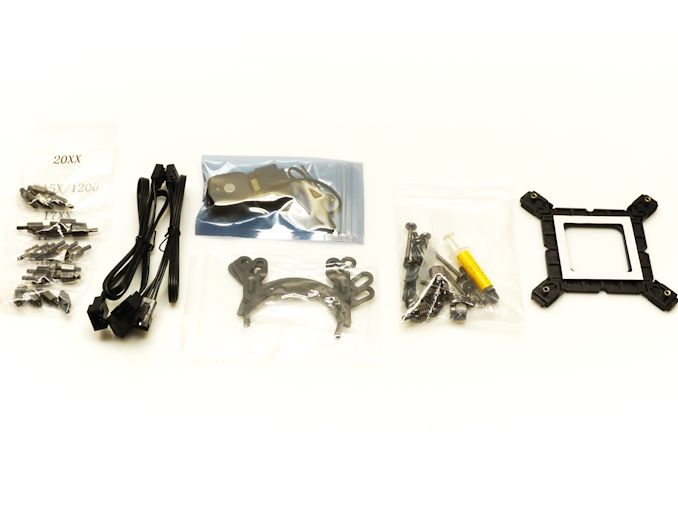
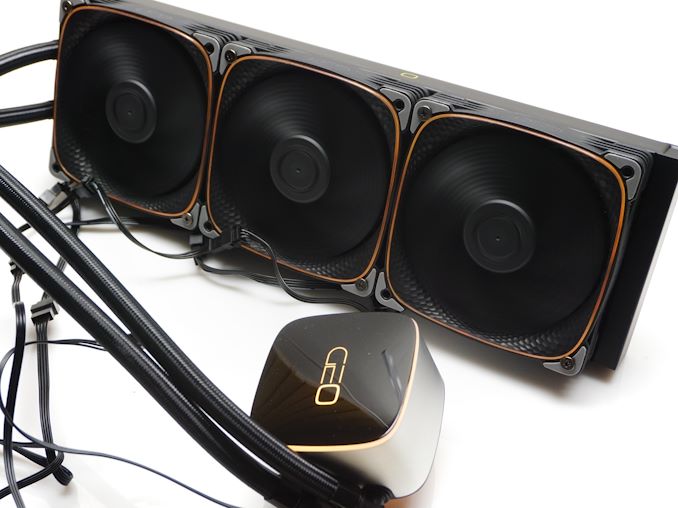

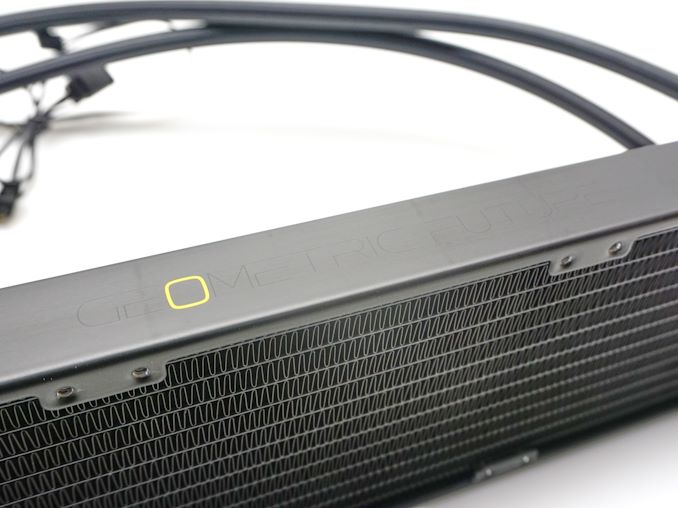
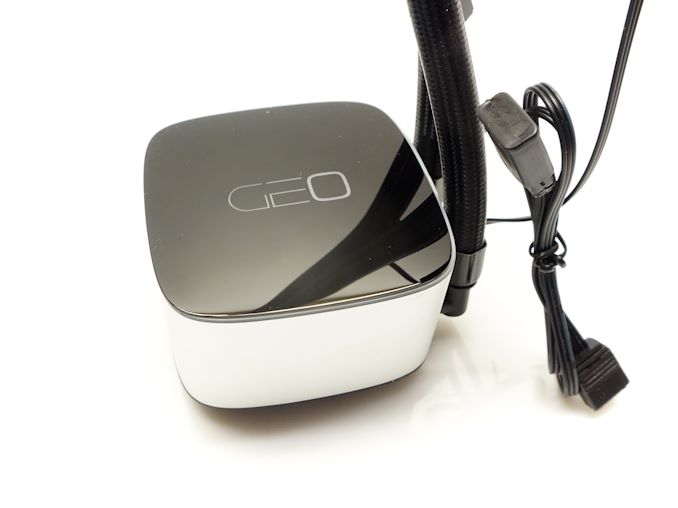
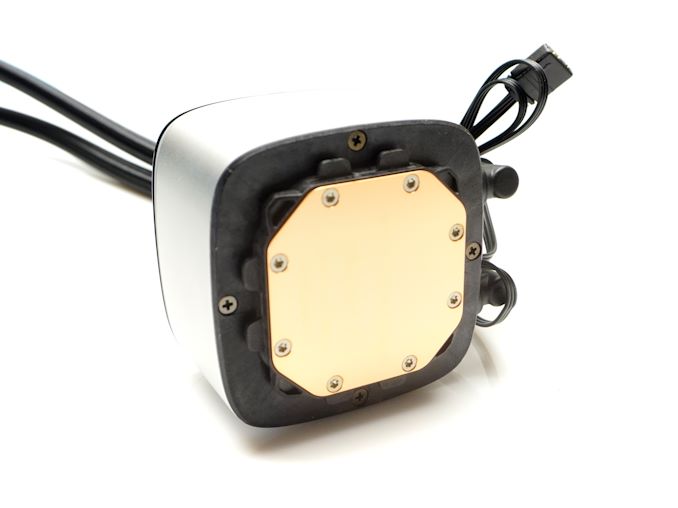
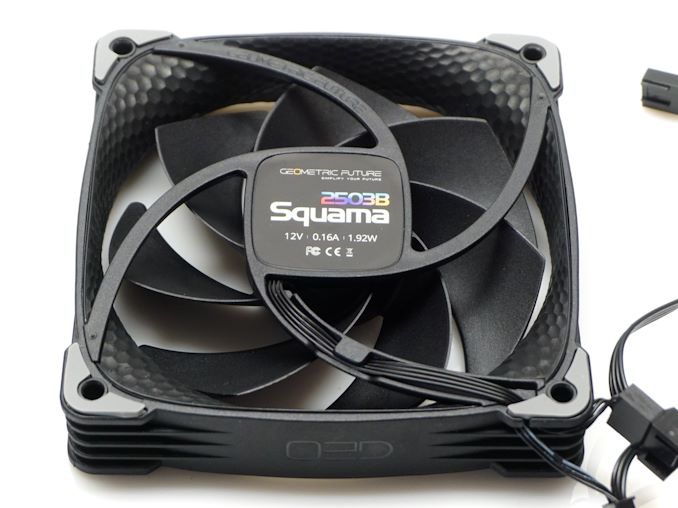
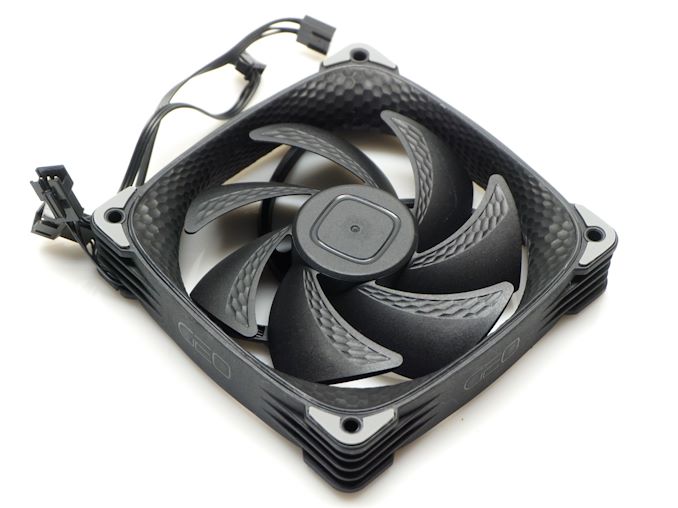
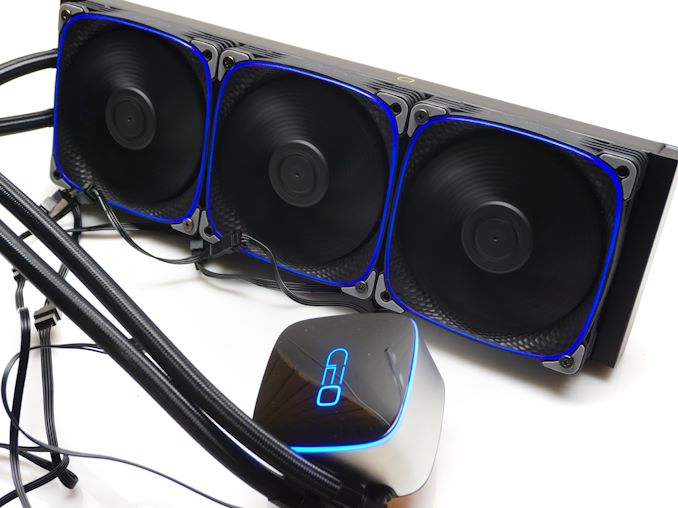








38 Comments
View All Comments
m3city - Friday, February 9, 2024 - link
It would be great if charts included thermal & noise values for a reference (stock) air cooler. This is what holds my wallet in my pocket - I don't know what I will achieve with addition of a water cooler. Less noise? Replyback2future - Friday, February 9, 2024 - link
[ improved (lower) heat resistance value from cpu&metalShielding towards ambient surroundings air (without additional case fans), therefore (probably, mostly) lower rpms from (2-)3 cooler fans or more headroom for power demand with a water pump providing sufficient flow for the water liquid (and enough surface area for the metal to water heat exchanger on top of the cpu), additionally one could add other sockets or chipsets or storage cooling demand to one cooling system, for the cost/price its about a decision for ~$15-20 quality fan(s) or a water cooler system (this) ~$120, durability comparison? ] Replyback2future - Monday, February 12, 2024 - link
['Most CLCs are copper blocks and aluminum radiators. Replacing the coolant in a mixed metal loop with just distilled water will probably result in corrosion issues before too long.' (?)'https://www.overclock.net/threads/how-long-is-the-... '
'https://gadgetmates.com/understanding-the-lifespan... ' ] Reply
back2future - Monday, February 12, 2024 - link
[ mean heat resistance for liquid coolers (tested on anandtech.com) is ~1.5 lower (for average mean) ~0.08°C/W and at ~38-40db(A) sound pressure level ('https://images.anandtech.com/doci/21211/TRvsSPL.pn... ') compared to direct air fans at ~0.12°C/W and ~34-36db(A) ('https://images.anandtech.com/doci/21231/TRvsSPL.pn... '), results to an increased temperature level (for that 100W tested steady heating power) of ~12°C (vs. 8°C for liquid cooling systems) for ~each 100W heat dissipation from cpu and above ambient temperatures and probably more additional resistance with getting into increased temperature levels (sooner with directly connected air fans with heated ambient air building up with slowing reduction rates for higher air flow rates on reducing heat transfer resistance 'https://en.wikipedia.org/wiki/Heat_sink#/media/Fil... ') and that's where the radiator's area advantage for liquid coolers (and) outside the pc case (positioning) adds to silence advantage and heat transfer headroom.maybe like that: 'idling'-dominated systems might prefer direct air cooling with fans and 'full-load'-dominated systems can be improved by liquid cooling (above ~~100s Watt power demand) ] Reply
back2future - Wednesday, February 14, 2024 - link
[ just another POV for comparison for air 'direct' on-site and AIO water cooling systems, with a win for on-site air cooling fan (double fan Noctua NH-U12A, ~$99)'https://www.youtube.com/watch?t=515&v=23vjWtUp... summary min8:35' ] Reply
edzieba - Monday, February 12, 2024 - link
With a giant glowing RGB brand logo right in the middle of the block, this must be some novel new definition of "Subdued Minimalism" that I was not previously aware of. Replybwj - Tuesday, February 13, 2024 - link
SPL isn't a terribly informative way to measure noise. I stopped using a Be Quiet! Pure Loop AIO because although it has a very low SPL, the sound it does make has a high Q factor around its central frequency. It is clearly audible as a whining sound from anywhere in the room, regardless of the power demands on the CPU. It makes that AIO useless for people who wanted a quiet system. Replyback2future - Wednesday, February 14, 2024 - link
[ What's the frequency (spectrum, sound power)? Some tell recognizable sounds is mostly about air within the pump side from possibly permeated cooling liquid over years of duty (and maybe corrected with refilling cooler liquid and more optimized positioning for radiator inlets being on higher height level than the liquid pump)? ] Reply